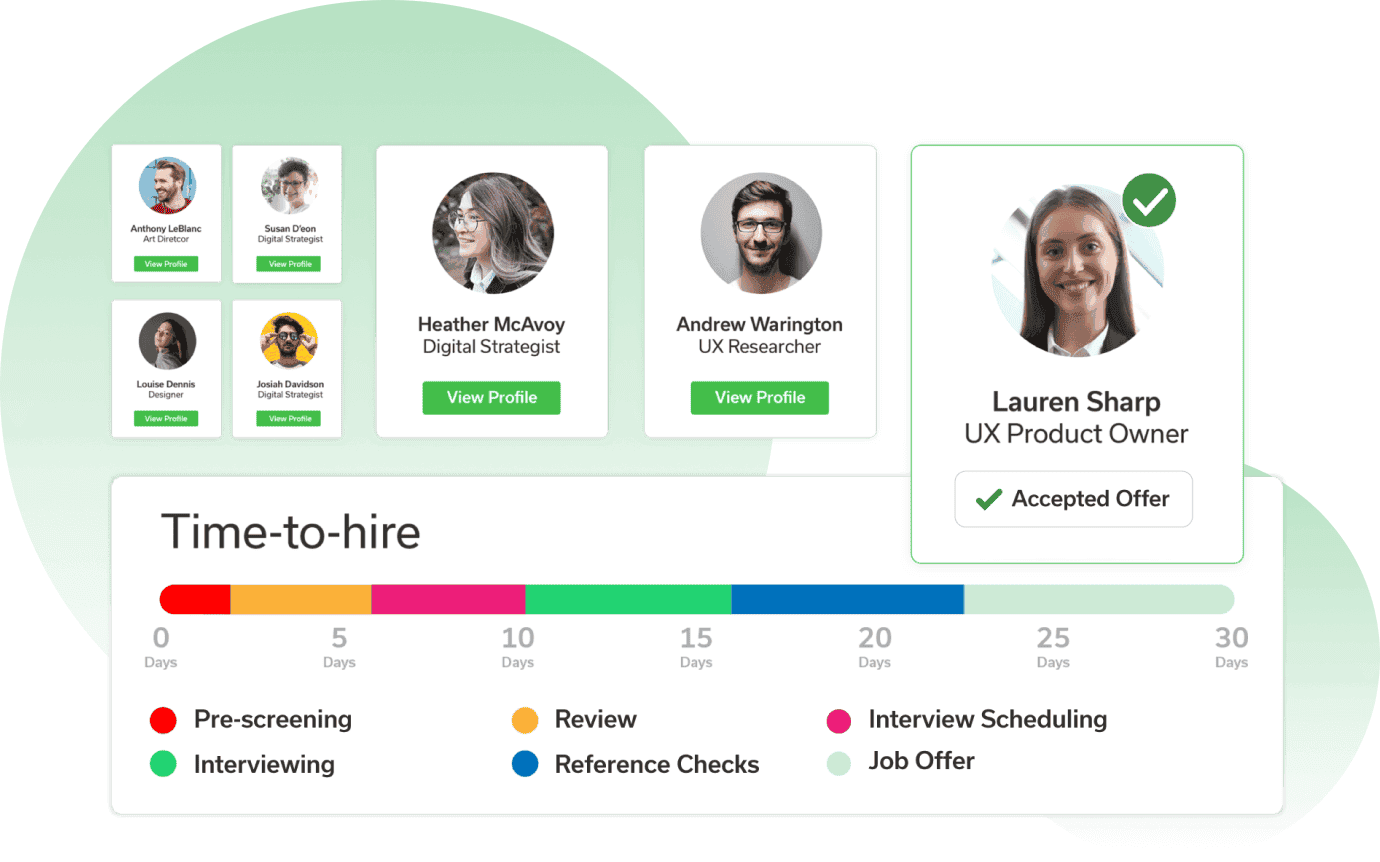Recruitment Suite
Streamline your hiring with an all-in-one recruiting software that manages every step of the process.
_Z1OOFv.png)
115,000+ hiring professionals trust VidCruiter
Find talent faster
Cut down your time-to-hire with candidate-driven hiring tools, and automated workflows.
Hire the top candidate
Increase the predictive validity of your hires by up to 65% with easy-to-use structured review.
Greatly reduce cost-to-hire
Get significant savings of up to 75% and achieve a high ROI by hiring better, faster.
Hire in a fraction of the time
Save time by using an end-to-end recruitment solution.
- Fully customizable automation eliminates back and forth admin tasks
- Leading provider of recruitment automation and video interviewing software
- One centralized system for your end-to-end recruitment process

Use best practices, gain top talent
The most informed decisions are made using data and structure. Hire the top candidate with confidence.
- Deploy structured interviewing across multiple interview formats
- Use your HR-approved, built-in rating guides in every interview
- No templates? No worries. We’ve partnered with IO psychologists to create validated interview guides and questions
- Be fully informed with data-driven evaluations, searchable applicant profile data, and real-time reports
_Z1AJ7O8.png)
Achieve a high ROI with a lower cost-to-hire
Optimize your budget. Save up to 75% on cost-to-hire with VidCruiter’s automated software.
- Save hundreds of hours with automated tasks and communication – from candidate-powered scheduling and "reference checks" to SMS and email
- Get an all-in-one solution from one vendor, rather than utilizing multiple vendors for overlapping features
- Cost-per-hire model allows the flexibility for you to focus on hiring instead of software licenses
_19XBze.png)
We were bringing people physically into our office where we had interview rooms with tripods and video cameras…we were interviewing them, going through a number of different takes, uploading the ones we wanted to a video streaming service, then getting links to embed into our CRM system and onto our website. VidCruiter sped the process up.

Ben Hazan
Co-Founder and Managing Director, GradBay
Give a Fair Interview and Get an Equal Way to Evaluate
Our structured interview methodology is available in all of our interview formats for an easy and equitable way to evaluate candidates.
Same interview length
Equal difficulty level
Identical questions asked
Diversified panel
Transparent reporting
Your Full Hiring Workflow Powered By One Leading Solution
An applicant tracking system with testing, interviewing, and referencing tools. Software that automates your entire recruitment process.
One Hiring Solution, Countless Benefits
Enhance your interview process with products that work with your existing tech stack.